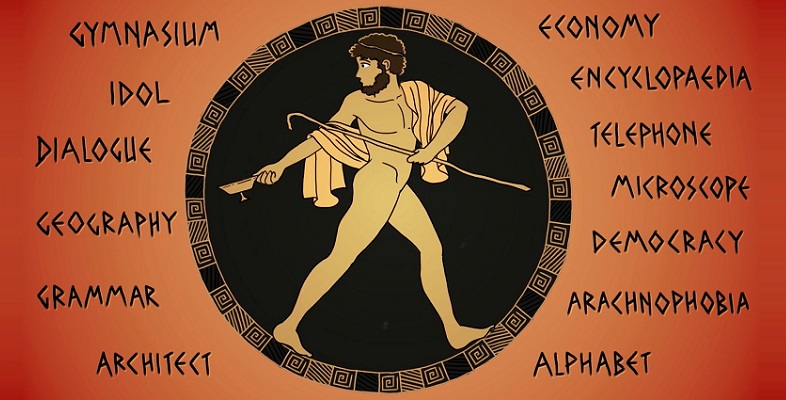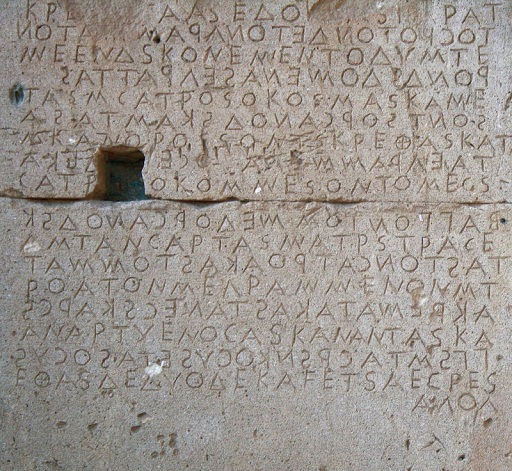9.2 Crete
A much greater divergence from the standard Greek alphabet can be observed on the Gortyn code, with some letters looking surprisingly different from the standard forms they assumed later. The code contains just 18 letters in total, which was perhaps the full extent of the Cretan alphabet at the time.
The reduced number of letters in the code can partly be explained by the use of some letters to represent more than one sound:
- Ε (epsilon) was used for both short and long ‘e’, as at Athens.
- Ο (omicron) was used for both short and long ‘o’, as at Athens.
- Π (pi) was used for Π (pi) and Φ (phi).
- Κ was used for Κ (kappa) and Χ (chi).
Activity 15 Examining the Gortyn code
The letter Ξ (xi) was not used, but its sound was represented by two letters. If you recall the sound of a ‘xi’, can you work out which two?
Discussion
Kappa and sigma. ξένος (stranger, guest) would become κσένος.
The letter Ψ (psi) was also represented by two letters. Which ones?
Discussion
Pi and sigma. ἔγραψε (he / she / it wrote) would become ἔγραπσε.
Now let us look for some unusual letter forms. Try to find:
- on line 2, a letter that looks like ‘C’
- on line 3, letters that look like ‘W’, ‘S’ and ‘M’
Recall that the top line in the photograph is written from left to right, and that the direction of writing changes on alternate lines.
Discussion
In the Cretan script:
- ‘C’ is the letter pi.
- ‘W’ is mu. It looks like ‘M’ but with an extra upstroke at the end, i.e. five strokes in total.
- ‘S’ is iota.
- ‘M’ is sigma (perhaps you can see why if you tilt your head to the right).
Look at the last complete line, i.e. ignoring the final short line. Can you find a letter that looks like ‘F’?
Discussion
This is ‘digamma’, a letter representing a ‘w’ sound. This sound plays an important role in early Greek poetry, with numerous instances in Homer, although they are not usually represented in printed texts.
The name ‘digamma’ was chosen because F looks like two gammas (Γ), one on top of another. Its original name seems to have been ‘wau’. A corresponding letter ‘waw’ existed in the Phoenician alphabet and still exists in Hebrew.

